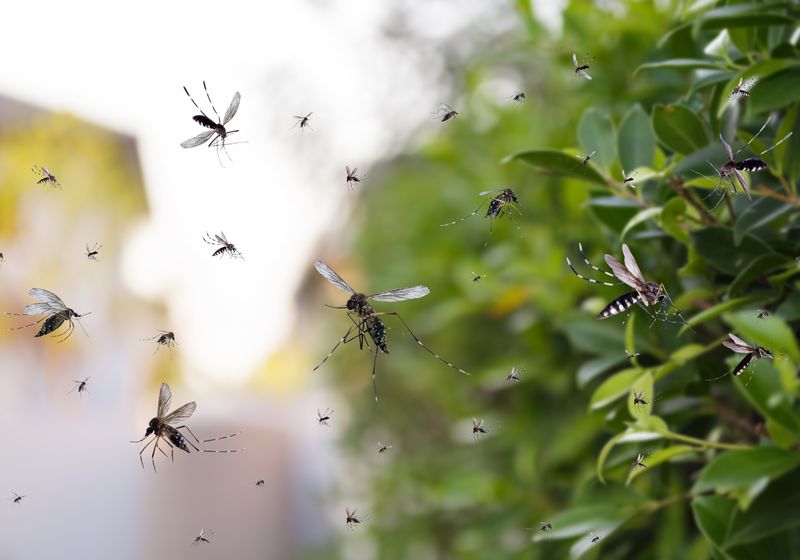Leveraging endosymbiotic bacteria could help researchers control disease vectors.
Around the world, insects wreak havoc on public health as carriers of infectious diseases such as malaria and Zika virus. People in some regions mitigate these risks by deterring the pests from reaching humans, such as with netting and insect-repelling sprays. Those in other areas use pesticides to kill the creepy crawlies, but these can have damaging effects on surrounding ecosystems.
Asha Wijegunawardana, an animal biotechnologist at the Rajarata University of Sri Lanka, is approaching vector control from a different angle: sterile insect techniques. In her lab, Wijegunawardana uses genetic modification approaches to reduce various endemic pests’ abilities to reproduce or carry disease. “I choose the projects where I can utilize my knowledge to give back to my community,” she said.
Asha Wijegunawardana uses multiple techniques to control insects’ reproduction and their disease-carrying capacity.
Geethanjana Perera
She is also excited to be a role model for young scientists, especially women, who are underrepresented in vector control research. “I’m trying to fill that gap,” she said.
Wijegunawardana started this work as part of her PhD research on population control methods of Aedes albopictus mosquitos, which carry Dengue virus. She explored using both sterilization of male mosquitoes and infecting female insects with the endosymbiotic bacteria Wolbachia, which prevents the mosquitoes from harboring the virus.1 Subsequently, she screened the natural carriage of Wolbachia bacteria in native mosquito species and found that the majority did not harbor this bacteria, including those of the species Aedes aegypti, which also carries Dengue virus.2
“I’m working on how we can use this Wolbachia to control these vectors that naturally don’t have Wolbachia,” Wijegunawardana said. However, this may be more complicated than inoculating the mosquitoes with the bacteria, as her team has seen that the insects don’t maintain the Wolbachia long-term. She and her team observed a relationship between the bacteria and a bacteriophage that seemed to support the presence of the bacteria in insect vectors, which could potentially improve this control strategy.
While mosquitoes are the most infamous disease vector, they aren’t the only ones on Wijegunawardana’s radar. She and her team are exploring multiple sterile insect technique approaches to control sandfly populations, which spread the parasite that causes the disease leishmaniasis. “Since no single method has been 100 percent proven to be effective at the field level, I prefer to use several approaches in parallel to maximize the chances of success with at least one of them,” she said.
In one approach, her team is genetically modifying Bacillus subtilis, a natural member of the fly’s gut microbiome, to prohibit the growth of the leishmaniasis parasite within the fly. In parallel, Wijegunawardana’s team is also exploring Wolbachia as a form of insect control for the sandflies. Recently, they screened two areas of the country with high incidence of leishmaniasis.3 In these areas, Wijegunawardana said, “We found that there are no natural infections of Wolbachia.”
Now, the team is sequencing naturally-occurring Wolbachia from other insect species to find one that they could introduce into the sandfly. “Once we develop this new Wolbachia-inoculated sandfly line, we hope to scale up the mass production and do lab trials [to see] whether…we could use the sand fly birth control method as well,” Wijegunawardana said.
Beyond public health insect control, Wijegunawardana is also applying her skills to the melon fly, an agricultural pest. “I’m trying to minimize the damage caused by this fruit fly species by controlling their density,” she said. Her team is currently looking for either naturally-occurring mutations or those caused by gamma radiation in the lab that could help them induce sterility in these insects. “Now I use all the knowledge I gathered for both infectious disease vector control as well as the agriculture pest control,” Wijegunawardana said.

